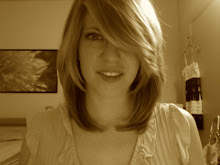
First off, you might want to click on the image, so you can see it against a white background instead of the green background of my blog. I made it transparent however to better explain my design.
For my redesign 4 I decided I would do my wine bottle labels. I first tried to think of what I wanted to call my wine. Since I was born in South Africa, I started looking up words in Zulu. Bheka means look in Zulu. I decided that I really liked the name, because for my audience, who most likely does not speak Zulu, it is a name that can be pronounced. I wanted something different, and this name fit to that requirement, without being so weird that no one would be able to grasp it.
I always knew I wanted 3 different bottles, but I came up with the idea that I wanted the labels on these bottles to fit into one another. I wanted to send a subconscious message to the consumer that the wines are meant to come as a package. I also wanted to be able to photograph the wine bottles together at the end of the project to show the packaged deal.
To further explain the images I have loaded one must understand that this one image is in fact the three labels. The first label is the blue on and will go onto a white zinfandel wine. The second label is the yellow. This label will be on a shiraz. The last label will be on a sauvignon blanc and is the pink label.
When I revise the labels and print them out, I will cut them with an x-acto knife. I will cut along the squiggly lines between the labels, and the “B” in Bheka. The B is meant to be negative space so that the viewer can see through to the bottle.
The audience that I would be targeting with these wines would be people in their 20’s. The wine would not be the most expensive wine, because it would need to be affordable, which is why I’ve also chosen clear wine bottles. Clear wine bottles are considered cheaper wine sometimes, which is ok in this circumstance, because of the audience. I would want the brand Bheka to appear trendy while still being affordable for a slightly younger audience.
When choosing the color scheme for these labels. I wanted something extremely different looking. When people walk down a wine aisle, I want Bheka to stand out. For returning customers I want it to be easy to find. The color scheme is not one that I have seen in many locations, if any. I certainly haven’t seen these colors while walking down any wine aisle lately.
I decided I would also keep the label very simple, because it went best with the design. If the customer is really interest in what vineyard the wine came from, they could simple look on the back label.
Overall, I hope that I have created an eye-catching design. Although the colors make one feel slightly uneasy, I hope they would draw attention for someone looking for a new wine. I would hope that because the labels and the colors fit together, it would make a consumer consider buying more than one type, or at least make there gaze last longer on my wine bottles.

1 comment:
Thanks, I clicked to see the image on white. Your explanation makes it make sense, although my guess is the bottles would never be perfectly aligned to get the exact lines you're looking for here. The B with the thin line may be problematic, unless you're going for that sort-of Simpson's look. Thinking about ways the three bottles would work together even if not perfectly aligned might also be a good idea. Imagine something like V W V or an upside down V split by two Vs. With squiggly lines they may need to be perfectly aligned whereas with other designs if something gets bumped or if the angle of the viewer is less than straight forward, the design still works a little. Good thinking about perception of colors and types; might speak about it in terms of the language of design a little more. The colors are, as you say, eye-catching.
Post a Comment